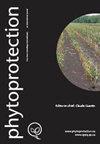Phytoremediation of hydrocarbon-contaminated soils with emphasis on the effect of petroleum hydrocarbons on the growth of plant species
IF 0.2
4区 农林科学
Q4 PLANT SCIENCES
引用次数: 74
Abstract
To date, many developing countries such as Iran have almost completely abandoned the idea of decontaminating oil-polluted soils due to the high costs of conventional (physical/chemical) soil remediation methods. Phytoremediation is an emerging green technology that can become a promising solution to the problem of decontaminating hydrocarbon-polluted soils. Screening the capacity of native tolerant plant species to grow on aged, petroleum hydrocarbon-contaminated soils is a key factor for successful phytoremediation. This study investigated the effect of hydrocarbon pollution with an initial concentration of 40 000 ppm on growth characteristics of sorghum (Sorghum bicolor) and common flax (Linum usitatissumum). At the end of the experiment, soil samples in which plant species had grown well were analyzed for total petroleum hydrocarbons (TPHs) removal by GC-FID. Common flax was used for the first time in the history of phytoremediation of oil-contaminated soil. Both species showed promising remediation efficiency in highly contaminated soil; however, petroleum hydrocarbon contamination reduced the growth of the surveyed plants significantly. Sorghum and common flax reduced TPHs concentration by 9500 and 18500 mg kg‑1, respectively, compared with the control treatment.烃类污染土壤的植物修复,重点研究石油烃对植物生长的影响
迄今为止,许多发展中国家,如伊朗,由于传统(物理/化学)土壤修复方法的高成本,几乎完全放弃了去污石油污染土壤的想法。植物修复是一种新兴的绿色技术,有望成为解决碳氢化合物污染土壤的一种解决方案。筛选原生耐药植物在石油烃污染土壤上的生长能力是植物修复成功的关键因素。研究了初始浓度为40000 ppm的烃污染对高粱(sorghum bicolor)和亚麻(Linum usitatissumum)生长特性的影响。在实验结束时,对植物生长良好的土壤样品进行气相色谱- fid分析,以去除总石油烃(TPHs)。在石油污染土壤的植物修复史上首次使用普通亚麻。两种植物在高污染土壤中均表现出良好的修复效果;然而,石油烃污染显著降低了被调查植物的生长。与对照处理相比,高粱和普通亚麻的TPHs浓度分别降低了9500和18500 mg kg - 1。
本文章由计算机程序翻译,如有差异,请以英文原文为准。
求助全文
约1分钟内获得全文
求助全文

 求助内容:
求助内容: 应助结果提醒方式:
应助结果提醒方式:


